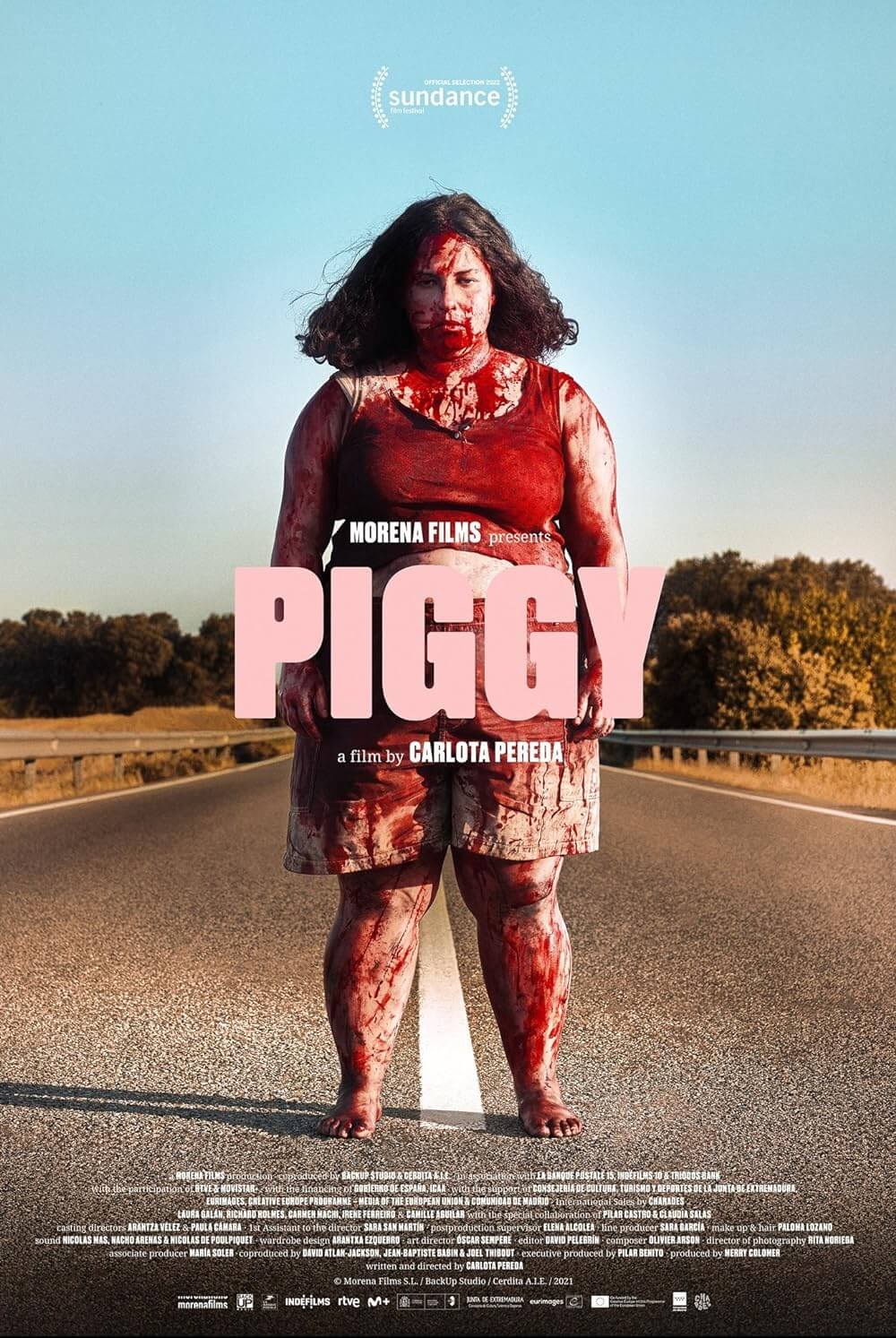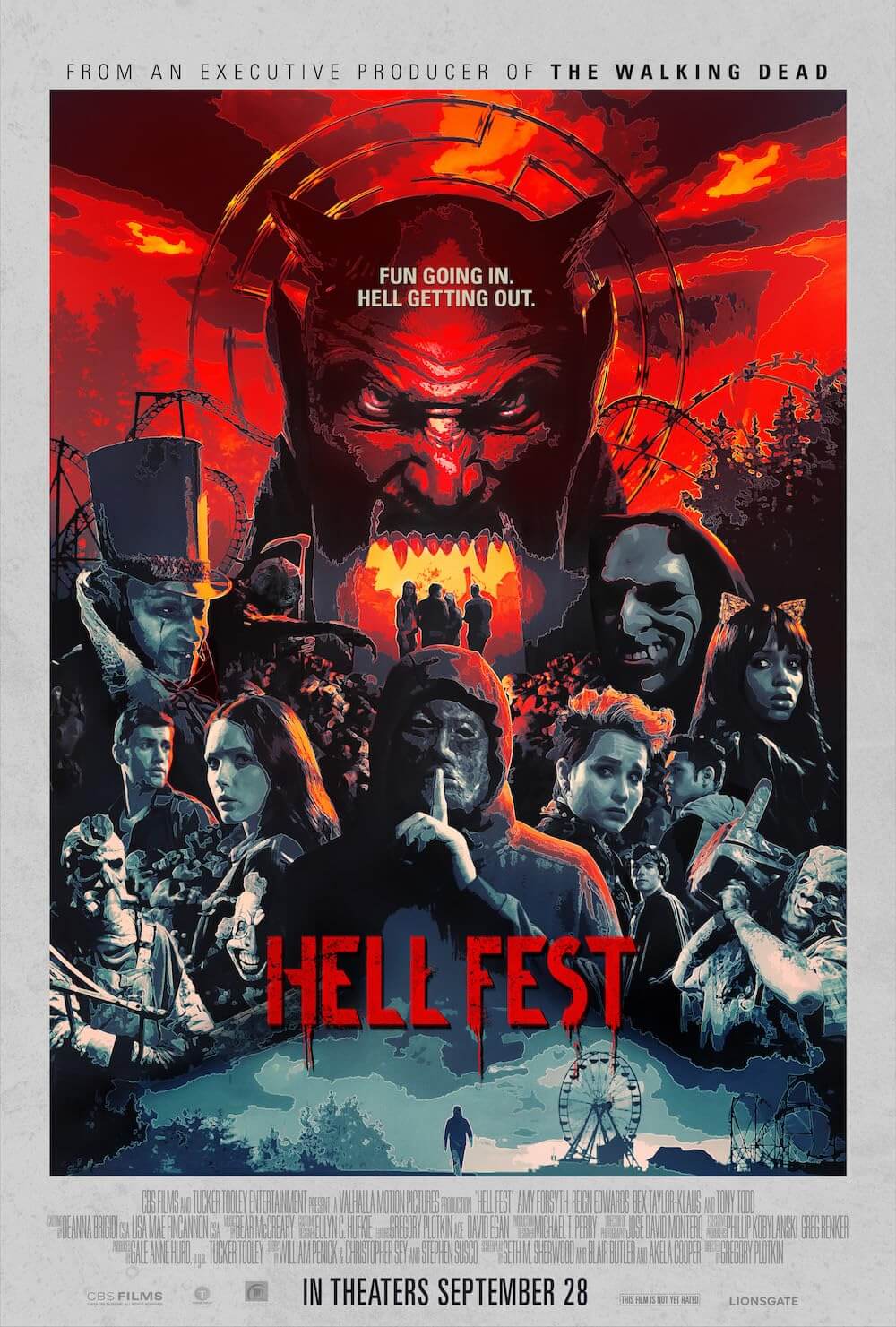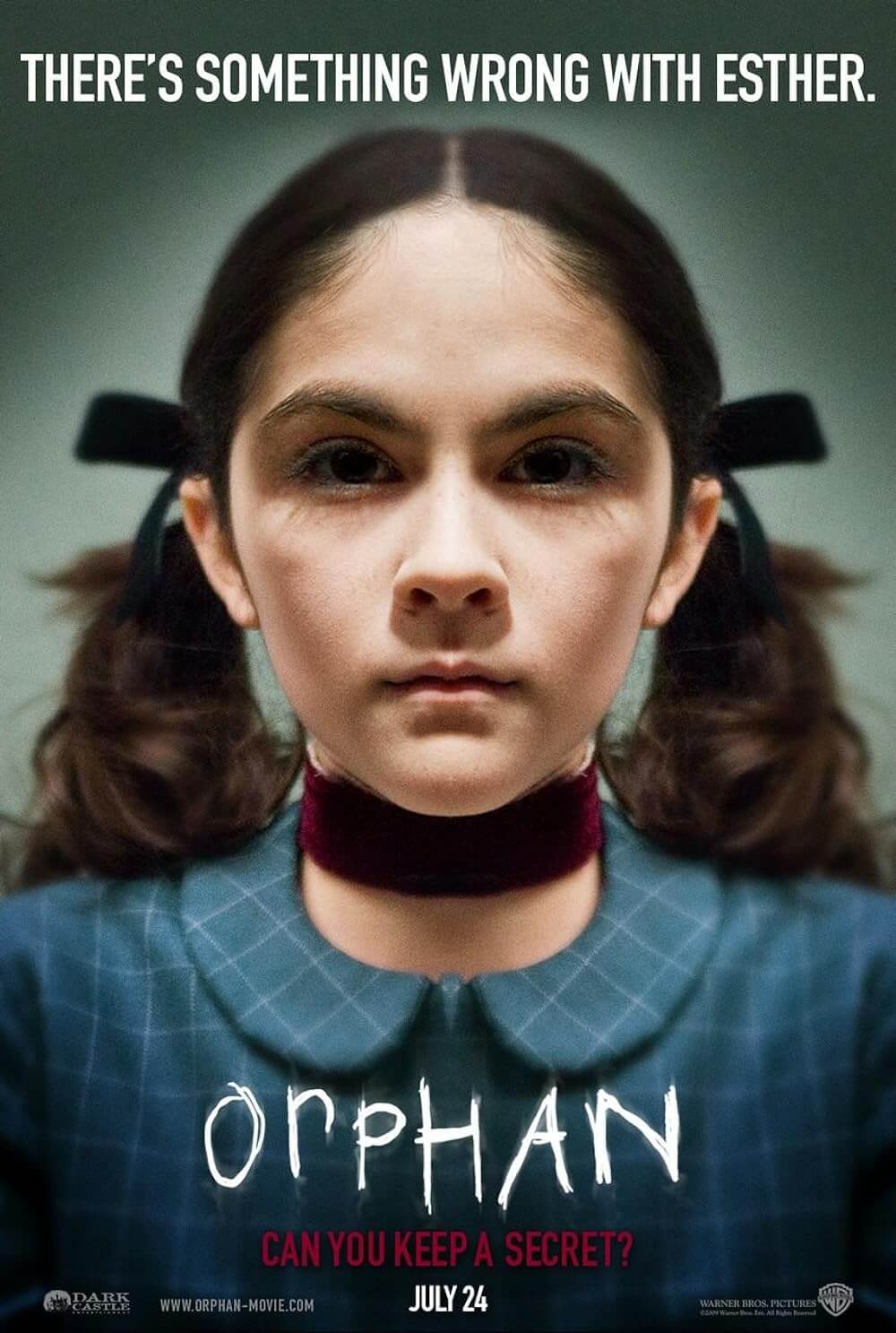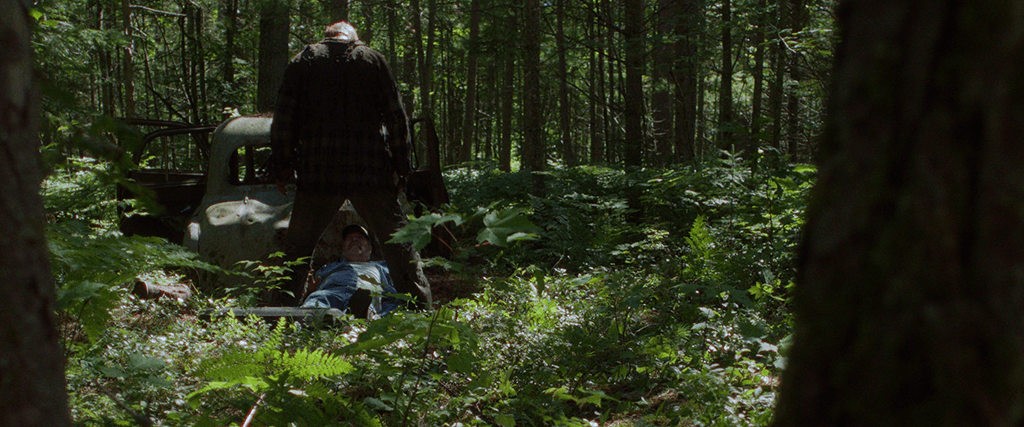
In a Violent Nature
By Brian Eggert |
Does this sound familiar? An oozing goliath returns from the grave to exact revenge on those who have inadvertently summoned him. Donning tattered clothes, a creepy mask, and rotting flesh, the undead force lumbers through the isolated woods, using a range of tools to mangle and dismember his victims. No, it’s not a remake or legacy sequel to the Friday the 13th franchise, and the killer isn’t Jason Voorhees. In a Violent Nature is a low-budget production that debuted at the Sundance Film Festival this year, and it’s more satisfying than any of the Friday the 13th movies because there’s an aesthetic agenda behind it. None of the Jason slasher movies have much going for them, besides watching poorly written characters get slaughtered in ever-more-creative ways. While there’s a certain ironic pleasure in such movies, which more often encourage viewers to laugh at them instead of feeling real terror, they’re mostly empty, disengaged experiences that were designed to feed on the horror fanbase to make a quick profit. By contrast, writer-director Chris Nash provides an artfully minded alternative to the Friday the 13th series, demonstrating that cliché slasher movie tropes can be creatively applied if the filmmaker puts some thought into their presentation.
From a narrative standpoint, In a Violent Nature adopts a familiar template, where a Jason-type killer slaughters a group of campers one by one. Deep in the wilderness, some twentysomething douchebags find a golden locket hanging among the dilapidated ruins of a small shack, and by taking it, they awaken the central baddie, who proceeds to stalk and execute anyone in his path to recover his locket. Later, around a campfire, a member of their obnoxious and horny group recounts the White Pines slaughter—a local legend where a logger accidentally killed a “slow” young boy named Johnny. When the boy’s father, a firefighter, confronted the logger, the other loggers defended their friend, and Johnny’s father ended up dead. But then, sometime later, the loggers were slaughtered as though torn apart by an animal. As it turns out, the dead child returns from the grave—bulked up with supernatural zombie strength and played by Ry Barrett—to exact revenge on anyone who messes with his locket, given to him by his father. The mythology may be thin, but it aligns with the film’s stripped-down essentialism. What’s unique is that the story unfolds almost entirely from Johnny’s subjectivity.
I use the word “subjectivity” instead of “perspective” because Nash and cinematographer Pierce Derks don’t create a first-person point of view; they place the camera behind Johnny, following his slow, relentless march through the woods toward his next victim. Nash remarks in the press notes that he was inspired by the sequences in the school-shooting drama Elephant (2003), where director Gus Van Sant trails behind a character centered in the frame, on the heels of a fateful encounter. Nash takes a similar approach; using a boxy Academy ratio, the director not only centers Johnny in the frame visually but also suggests the monster’s narrow, single-minded mission, with an austerity signaled by the chilling lack of a musical score. Most slasher movies deploy a few sequences from the killer’s perspective, such as gazing at swimmers from across a lake, peering through the trees, or creeping toward someone in the shower. These shots usually tell the viewer that someone’s out there and momentarily put us in their perspective to amplify the suspense. Nash’s camera remains in a third-person POV, but given its proximity to Johnny, we view the story through his subjectivity.
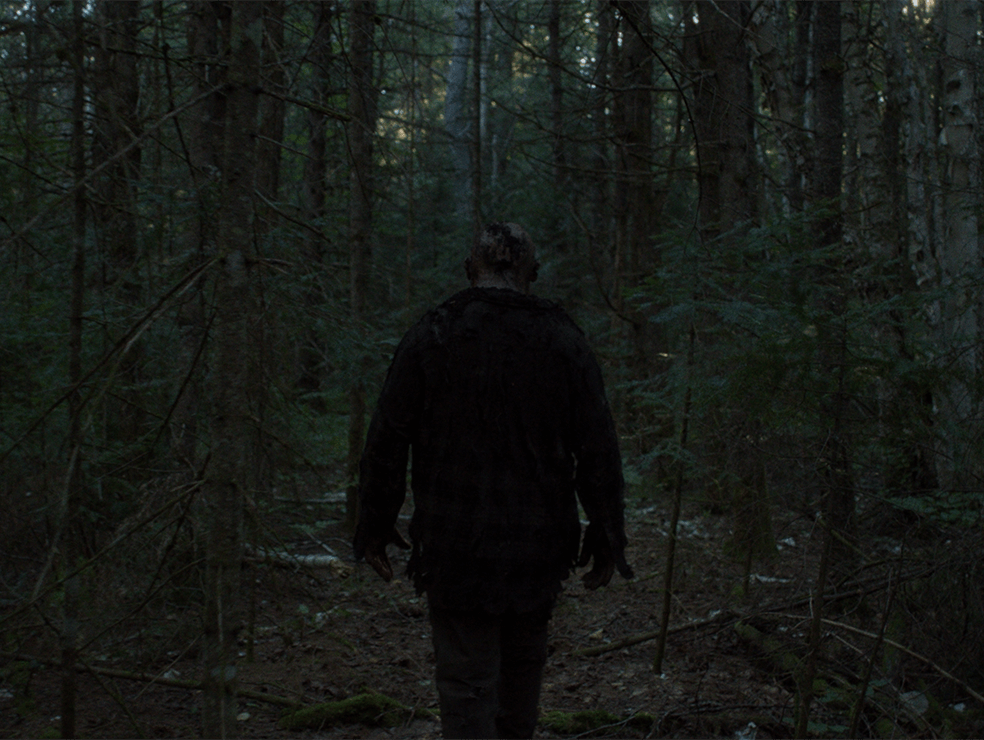 Nash also breaks from Johnny’s view several times throughout the film to, for instance, observe campfire stories, adjust to a bird’s eye view of a grisly killing, or supply insert shots of particularly gory details. To achieve these, Nash enlisted Steven Kostanski of PG: Psycho Goreman (2021) infamy to create the memorably nasty blood-and-guts sequences, which include some of the most original onscreen deaths in recent memory. Nash also offers oddly tender moments where Johnny remembers incidents from his past. One standout scene sees the overgrown movie maniac picking up a set of keys with a toy car keychain. Evidently still a child in his mind, Johnny sits down to play with the car, rolling the wheels on his hand. Details such as this evoke an eerie sympathy for Johnny; the viewer roots for him to recover his locket more than they want the victims to escape. Still, most of the 94-minute runtime follows Johnny on his murderous path, with the long passages of Johnny’s heavy-footed trudge toward his next victim only interrupted by the occasional jump cut.
Nash also breaks from Johnny’s view several times throughout the film to, for instance, observe campfire stories, adjust to a bird’s eye view of a grisly killing, or supply insert shots of particularly gory details. To achieve these, Nash enlisted Steven Kostanski of PG: Psycho Goreman (2021) infamy to create the memorably nasty blood-and-guts sequences, which include some of the most original onscreen deaths in recent memory. Nash also offers oddly tender moments where Johnny remembers incidents from his past. One standout scene sees the overgrown movie maniac picking up a set of keys with a toy car keychain. Evidently still a child in his mind, Johnny sits down to play with the car, rolling the wheels on his hand. Details such as this evoke an eerie sympathy for Johnny; the viewer roots for him to recover his locket more than they want the victims to escape. Still, most of the 94-minute runtime follows Johnny on his murderous path, with the long passages of Johnny’s heavy-footed trudge toward his next victim only interrupted by the occasional jump cut.
Some mild humor emerges from Nash aligning the viewer with Johnny. Take when the last two survivors shout into the darkness, “Come and get us! We’re right here! What are you waiting for?” The viewer watches over Johnny’s shoulder, listening to their poorly concealed whispers as they outline a plan to get the jump on Johnny. No wonder the slasher always gets the upper hand in these moments; the victims don’t know how to whisper properly. The sheer slowness and excessiveness of some killings also underscores the elaborate lengths to which Johnny will go to eliminate his victims. The viewer begins to think one victim got off easy with a broken back, until Johnny drags him to a nightmarish end in a tool shed. Johnny’s at times methodical approach reflects Nash’s direction—deliberate, rigorous, and arranged in a series of punishingly long shots. It’s only during the last section of In a Violent Nature that the film reframes its subjectivity to the resident final girl, Kris (Andrea Pavlovic). She narrowly escapes yet remains haunted by Johnny’s presence. Doubtless, the last sequence may lose some horror fans, given how it breaks from the established pattern. But the finale’s change emphasizes how Nash spends much of his film rethinking the methods of a typical slasher movie.
In a Violent Nature is a prime example of how a filmmaker can take well-worn material, apply a new or artistic lens, and accomplish something both exciting and entertaining using the same old elements. Neither the characters nor their dialogue, nor even the events throughout prove innovative, even if Johnny’s decaying appearance and choice of vintage firefighter mask and drag hooks are memorable. Horror fans have seen this kind of masked killer yarn many times before, just never quite like this. Nash’s commitment to his austere presentation deserves admiration. It’s a meticulous piece of filmmaking, which is not an applicable description for any Friday the 13th movie. Appealing to the demands of both horror aficionados and those interested in formal experiments and genre deconstruction, Nash’s film offers an exciting new take on dusty material.
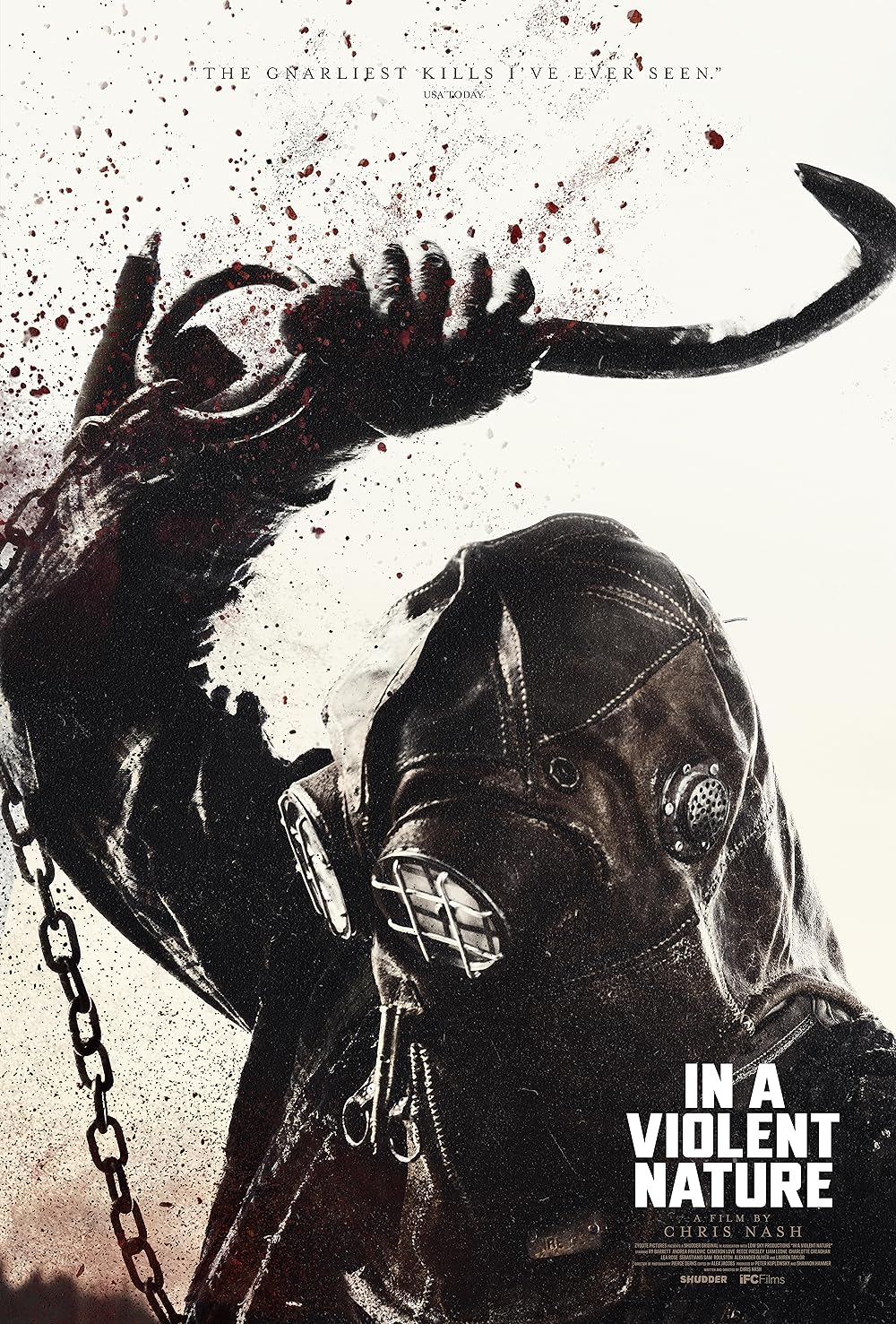
Unlock More from Deep Focus Review
To keep Deep Focus Review independent, I rely on the generous support of readers like you. By joining our Patreon community or making a one-time donation, you’ll help cover site maintenance and research materials so I can focus on creating more movie reviews and critical analysis. Patrons receive early access to reviews and essays, plus a closer connection to a community of fellow film lovers. If you value my work, please consider supporting DFR on Patreon or show your support in other ways.
Thank you for your readership!
Brian Eggert | Critic, Founder
Deep Focus Review


